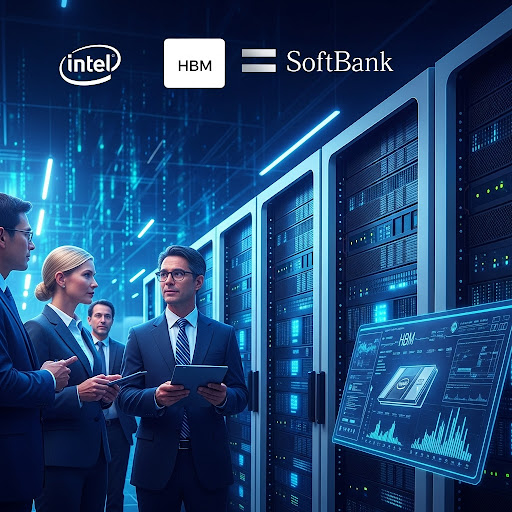Intel and Japanese investment giant SoftBank have joined forces to create innovative multi-tier high-bandwidth memory that could reduce energy consumption by half compared to current HBM memory solutions.

G. Ostrov
The data center industry faces mounting challenges in energy efficiency, particularly when operating artificial intelligence systems. Leading technology companies are actively seeking solutions to reduce power consumption not only in processors but also in memory components.
A major breakthrough in this field is being prepared by Intel and Japanese investment group SoftBank, which is the largest shareholder of British holding company Arm. SoftBank actively participates in global computing infrastructure development projects, including the massive American Stargate project worth approximately $500 billion.
Technological Breakthrough in Memory
According to information from Nikkei Asian Review, the partners are working on creating multi-tier high-bandwidth memory with an innovative connection architecture. The key advantage of the new technology lies in a two-fold reduction in energy consumption compared to existing HBM solutions.
To implement the project, a specialized company called Saimemory has been established, which will have access both to Intel's technologies and to developments from Japanese universities. This strategic partnership combines American technological expertise with Japanese research achievements.
Investment and Timeline
The total project budget is $70 million, with SoftBank planning to contribute up to 30% of this amount. Other Japanese technology companies may join the project, which would strengthen the country's position in the global semiconductor industry.
Developers plan to create a working prototype within two years. With successful testing, mass production could begin before the end of the current decade. Saimemory will focus on technology development, while production will be outsourced to third-party companies.
Strategic Perspectives
The Japanese government is considering providing targeted subsidies to support the project. As part of the national strategy for developing the semiconductor industry and artificial intelligence, $700 million is planned to be invested by the end of the decade.
For SoftBank, the new energy-efficient memory is of particular interest as it will significantly reduce operating costs of data centers and optimize construction costs for new facilities. Upon successful project implementation, SoftBank will receive priority access to the finished products.
Market Opportunities
Japanese companies' participation in development could bring them significant revenue from the growing AI technology market. Forecasts indicate DRAM memory shipment growth averaging 21% annually from 2023 to 2027 due to the development of the artificial intelligence market.
Historically, Japanese DRAM manufacturers controlled 70% of the global market in the 1980s but subsequently lost positions to South Korean competitors and American Micron Technology. The new project could be an opportunity to restore Japanese presence in a critically important semiconductor industry segment.
More detailed information about Intel's technological developments can be found on the company's official website.
If you have any problems, contact us, we will help quickly and efficiently!




